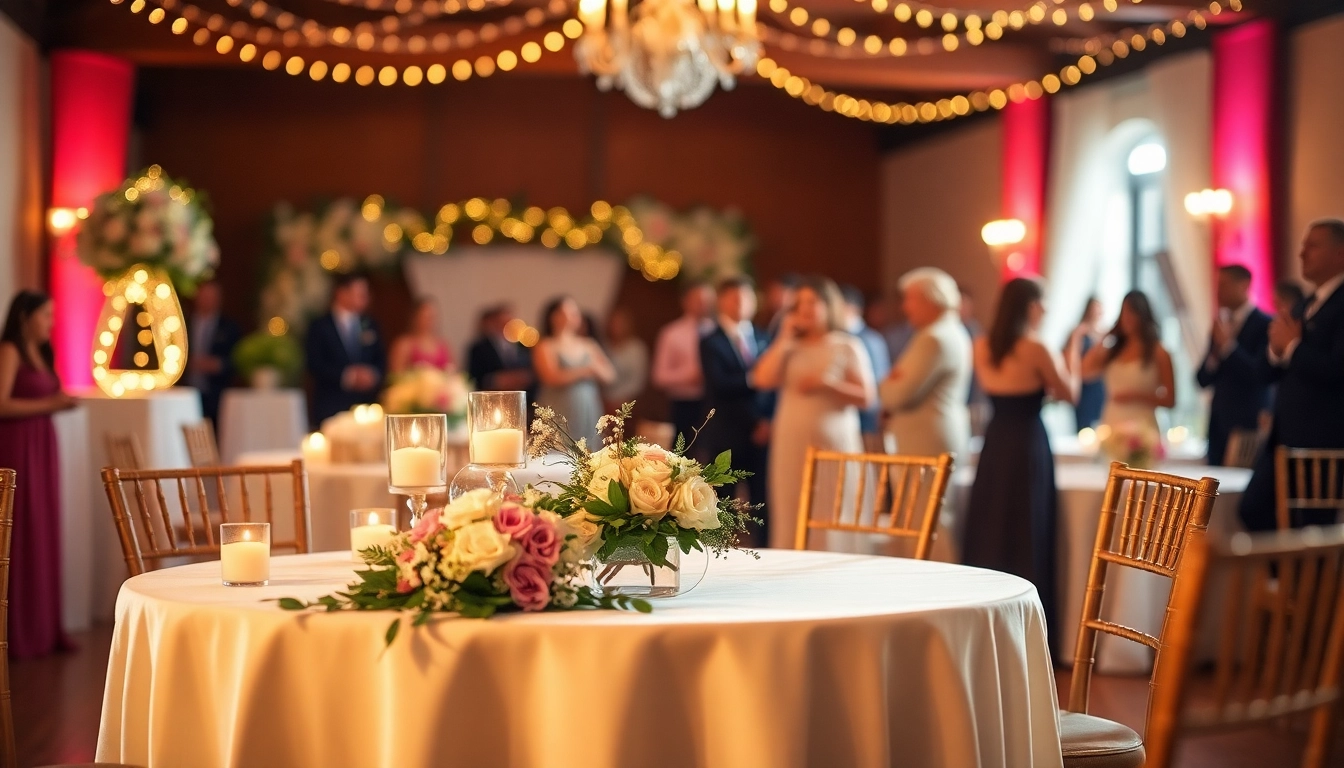Expert Techniques for Exceptional Wedding and Event Video Editing

Understanding Wedding and Event Video Editing Basics
Wedding and event video editing is a specialized form of video production that captures the most memorable moments of significant life events. It transforms hours of raw footage into polished, compelling stories that encapsulate the essence of the occasion. With the rise of digital media and social sharing, the demand for high-quality wedding and event video editing services has soared, creating a competitive market for both budding and established videographers. For those looking to delve into Wedding or Event Video Editing, understanding the fundamentals is essential to standing out.
What is Wedding and Event Video Editing?
Wedding and event video editing involves the post-production process of selecting, arranging, and refining video footage to create a cohesive narrative that highlights the most significant moments of a wedding or event. This process includes cutting and trimming clips, adding transitions, sound effects, and music, color grading, and sometimes, incorporating visual effects. Editors strive to convey the emotions, stories, and nuances of the day, which requires not only technical skills but also a good understanding of storytelling.
Essential Tools for Effective Video Editing
To produce high-quality wedding and event videos, editors need specific tools and software that cater to professional editing workflows. Commonly used tools include:
- Editing Software: Programs like Adobe Premiere Pro, Final Cut Pro, and DaVinci Resolve provide powerful editing capabilities needed for professional workflows.
- Hardware: High-performance computers with ample RAM, a reliable graphics card, and SSD storage for fast data access are crucial to handle large video files and complex edits.
- Audio Equipment: Quality microphone setups for capturing clean audio during the event which can then be used in post-production for voiceovers and sound mixing.
- Color Grading Software: Tools like Adobe SpeedGrade or DaVinci Resolve assist in achieving the desired look and feel through color correction techniques.
Steps in the Video Editing Process
- Import Footage: Begin by organizing all raw footage into different folders for easy access during the editing process.
- Rough Cut: Create a rough cut by selecting the best clips from the footage and arranging them sequentially according to the event timeline.
- Fine Cut: Refine the footage, trimming clips to remove any unnecessary elements and ensuring a smooth flow.
- Add Audio: Incorporate background music, voiceovers, and sound effects to enhance the story.
- Color Grading: Adjust colors and exposure to ensure all clips match in look and feel.
- Export: Finally, render the video and export it in the desired format, optimized for various platforms if needed.
Common Challenges in Wedding Video Editing
Editing wedding and event videos is not without its challenges. Understanding these potential obstacles can help editors prepare and strategize their workflow more effectively.
Managing Raw Footage After Events
After an event, editors often find themselves with an overwhelming amount of raw footage. Organizing and managing this footage is crucial. A proven method is to categorize clips by moments (ceremony, speeches, reception) or by camera angles. Some editors suggest using a labeling system or color-coding to prioritize which clips will be used for the final edit.
Time Management in Post-Production
Time management is a critical concern in post-production, especially when individual projects can range significantly in length and complexity. Setting realistic deadlines and creating detailed timelines for various phases of editing can help mitigate this issue. Many professionals recommend a rough rule of thumb: anticipate that one hour of footage may require about three to four hours of editing time.
Dealing with Client Expectations
Balancing creative vision with client expectations can often be tricky. Clear communication during the consultation phase is essential. Providing clients with examples of past works can set a standard for what they can expect. Engaging clients in the editing process, such as asking for feedback on rough cuts, can also align expectations throughout the project.
Best Practices for Wedding and Event Video Editing
To ensure that your final videos resonate with clients and audiences, adhering to best practices is fundamental.
Creating a Narrative with Your Edits
One of the most compelling aspects of event editing is the ability to tell a story through non-linear timelines. Each edit should contribute to the narrative arc – from the build-up of excitement to the climax and resolution. Consider using elements like reaction shots, cutaways, and establishing shots to enrich the storytelling.
Incorporating Music and Sound Design
Music plays a pivotal role in evoking emotion and setting the tone of the video. Selecting the right tracks that complement the visuals can make a significant impact on the viewer’s experience. Additionally, incorporating sound design – like ambient sound from the event or voiceovers – enhances depth and realism in the final edit.
Color Grading Techniques for Emotional Impact
Color grading is essential for creating ambience and emotional resonance in wedding videos. Techniques such as LUTs (Look-Up Tables) and manual color correction can help achieve a specific look or feel. Editors should strive for a consistent color palette throughout the video to maintain a cohesive look.
Advanced Techniques in Wedding and Event Video Editing
As you become more proficient in editing, incorporating advanced techniques can elevate your work significantly.
Using Multicam Editing for Dynamic Shots
Many wedding videographers use multiple cameras to capture different angles during crucial moments, such as the ceremony. Multicam editing allows you to switch between angles seamlessly, creating a dynamic viewing experience. Most editing software supports multicam functionality, enabling you to sync clips based on audio or visual cues.
Special Effects to Enhance Storytelling
Incorporating special effects can add flair to wedding videos. Techniques such as slow motion, time lapses, and transitions can highlight emotional moments or create a more dramatic impact. However, moderation is key; effects should enhance the story, not overshadow it.
Integrating Social Media Formats
With the rise of social media, creating shorter formats of wedding videos optimized for platforms like Instagram, TikTok, and Facebook can help increase visibility. Editors should consider creating highlight reels and stories, designed specifically to cater to the different audiences on these platforms.
Measuring Success in Wedding Video Editing
Understanding the metrics of success in your video editing business can help refine and improve your skills and services over time.
Client Feedback and Improvements
Soliciting feedback from clients post-delivery can provide invaluable insights into their satisfaction and areas for improvement. Consider creating a simple survey post-project completion to gather feedback on various aspects of your service, from communication to the final product.
Using Analytics to Track Engagement
If you share your videos online, use analytics tools to track viewer engagement and behavior. Metrics such as watch time, likes, shares, and comments can offer insights into what resonates with viewers and what may need adjustment.
Pricing Strategies for Video Editing Services
Finally, pricing your services correctly is crucial for sustainability and success. Research industry standards and evaluate your skills and experience to create a pricing structure that reflects the value you provide. Offering package deals for different service levels can attract a range of clients while ensuring your time and effort are adequately compensated.



Leave a Comment